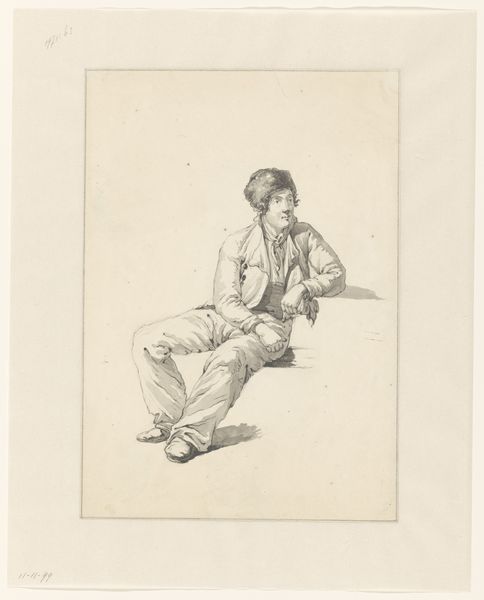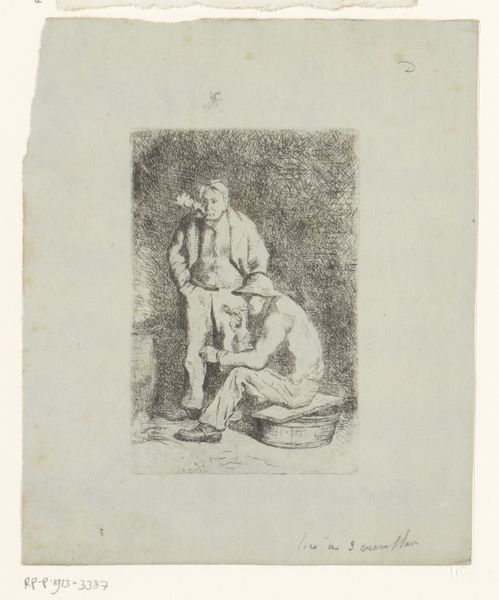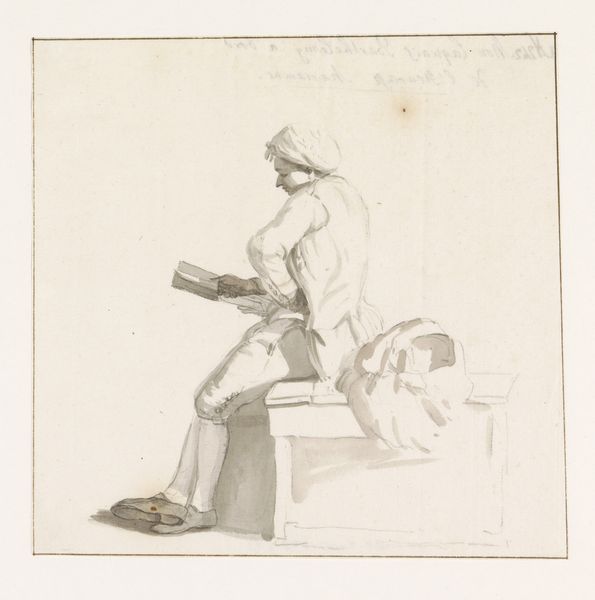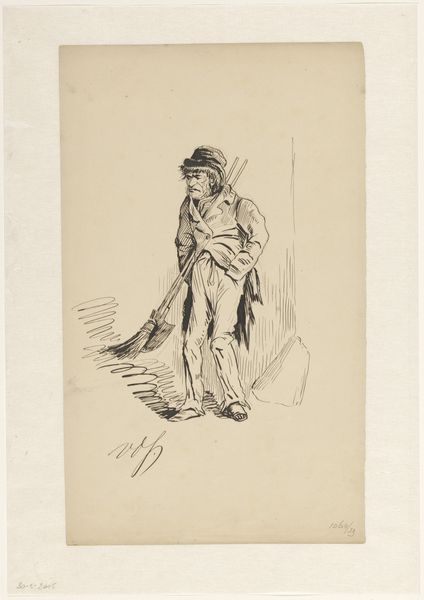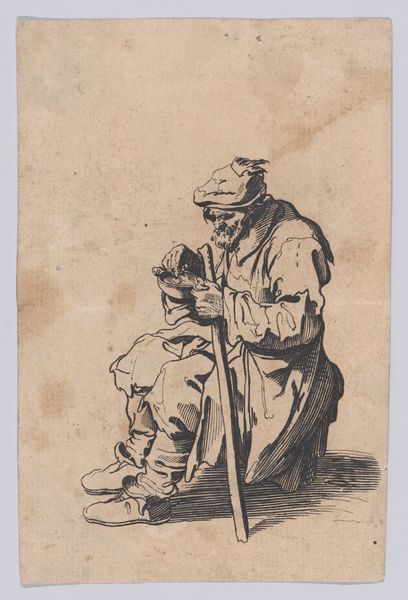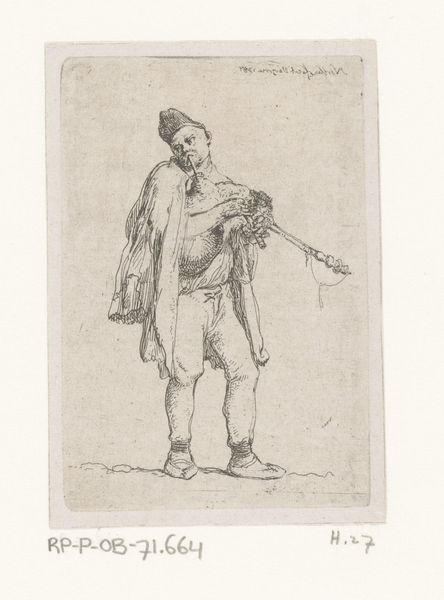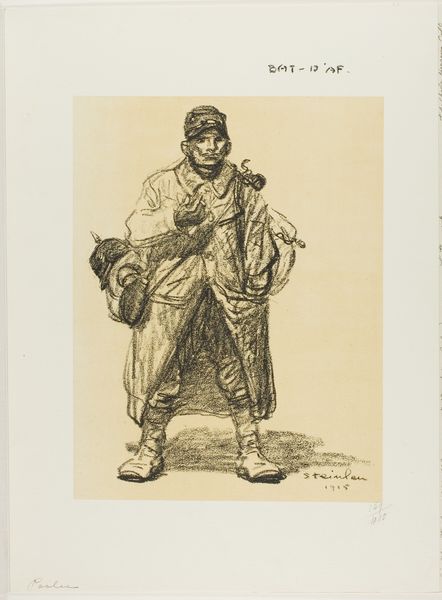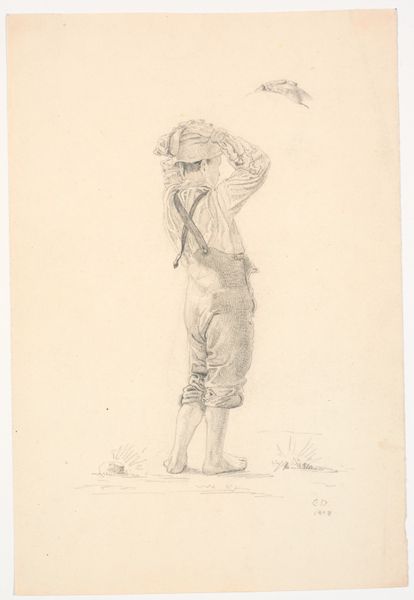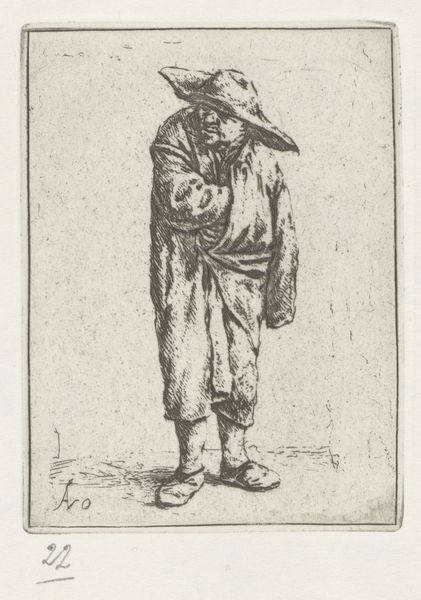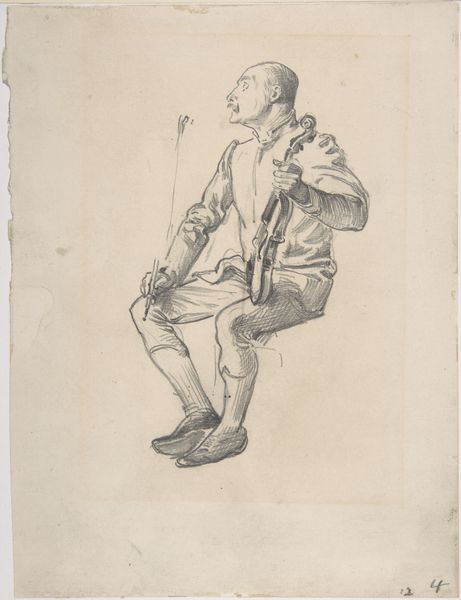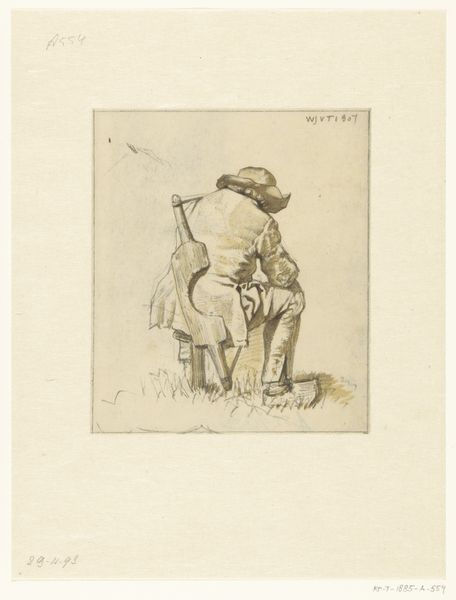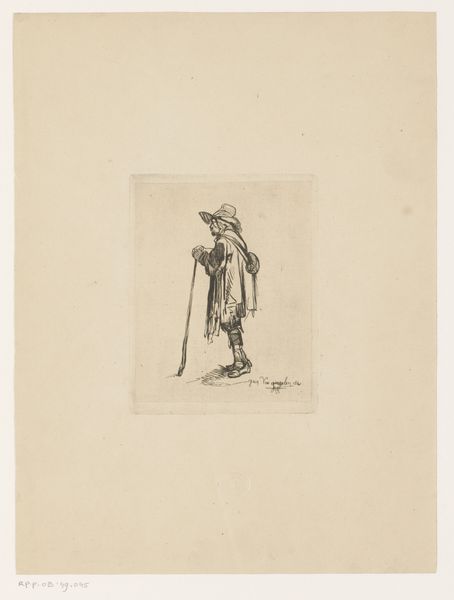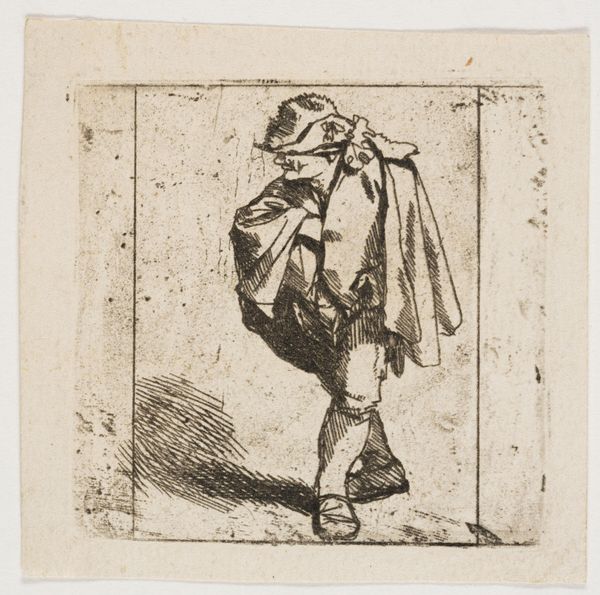
drawing, pencil
#
portrait
#
drawing
#
pencil sketch
#
figuration
#
romanticism
#
pencil
#
genre-painting
Dimensions: height 246 mm, width 177 mm
Copyright: Rijks Museum: Open Domain
Curator: Here we have Wouter Johannes van Troostwijk's "Zittende boer die pijp rookt," or "Seated Farmer Smoking a Pipe," created in 1806. It's a pencil drawing currently held in the Rijksmuseum. Editor: The monochromatic reddish-brown pencil really draws the eye to the texture, the cross-hatching on the figure’s clothes and face—you can almost feel the rough cloth of his coat and the man's weariness. It’s such a simple composition, but very effective. Curator: Absolutely. The piece resonates with the romantic ideals of the era, offering an idealized, perhaps even sentimental view of rural life and labor. Think about the social context; the rise of the merchant class was changing Dutch society, and this kind of art spoke to a longing for a simpler past. Editor: Yes, and consider the choice of pencil. It's such a direct medium. We’re seeing the immediate results of labor—Troostwijk’s hand, the graphite rubbed onto the paper. No flashy oils, no layering… the focus becomes the raw materiality of the drawing process. Curator: True, and the drawing itself exists within a specific art market—works on paper, studies of this kind, were highly sought after by collectors and connoisseurs. The focus wasn’t on monumental history paintings, but on these intimate portrayals. Editor: There's a real sense of documentation, isn't there? Capturing a specific person, in a specific moment, wearing particular clothes fashioned from specific textiles. I wonder about the means of his living. Did he own land, or labor for someone else? Curator: It is a compelling question. It humanizes the figure, situating him within the rapidly evolving social fabric of the time. It asks us to reconsider the unsung voices that contribute to society. Editor: It also allows us to reflect on our contemporary relationship to materiality and labor. How far removed we are from the basic processes of cultivating land or making the tools for living! It offers pause for consideration. Curator: Indeed. It's a glimpse into a world undergoing tremendous change. Editor: And a tangible reminder of the human labor that shapes our own world.
Comments
No comments
Be the first to comment and join the conversation on the ultimate creative platform.
